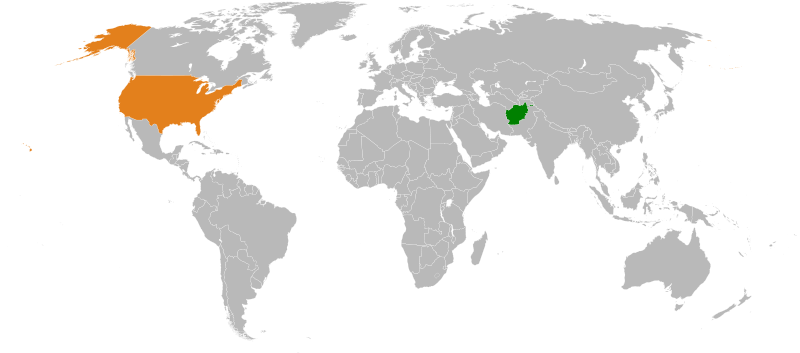How U.S. Timelines Failed Afghanistan and its People
September 21, 2021
On Aug. 30, one minute before midnight Kabul time, the last C-17 military transport aircraft filled with United States personnel departed from Hamid Karzai International Airport, marking the end of America’s 20-year war in Afghanistan.
What began as an effort to root out those responsible for the Sept. 11, 2001 terrorist attacks evolved into a campaign that spanned four administrations and claimed over 170,000 lives—including nearly 2,500 American service members, 66,000 Afghan national military and police, and over 47,000 Afghan civilians. Through strategic indecisiveness and a misguided adherence to withdrawal timelines, the war ended much as it began: with the Taliban as the de facto leaders in Afghanistan.
It also ended with a broken commitment to the Afghan people. Though some argue that nation building was not—or should not have been—the goal of American involvement in Afghanistan, promises were made in the form of U.S. resources, military training, aid, and tools, all provided to ensure a prosperous nation that could withstand a Taliban insurgency.
Earlier this month, I spoke about the U.S. withdrawal from Afghanistan with Georgetown University Professor Paul D. Miller. Dr. Miller—who was the Director for Afghanistan and Pakistan on the National Security Council, an intelligence analyst for the Central Intelligence Agency, and a military intelligence officer in the U.S. Army—underscored America’s commitment, saying, “The U.S. promised in repeated written agreements to stand by the Afghan government and the Afghan nation and to invest in its security, freedom, and prosperity.”
But the abdication of those responsibilities appeared to be foreshadowed by the U.S.’s fixation on arbitrary timelines to reduce and end its military presence in Afghanistan. This gave the Taliban the confidence to wait out U.S. forces and it forced a premature complete withdrawal. While there was some sound rationale in support of a withdrawal voiced by U.S. citizens, political leaders, and political pundits, there was perhaps a stronger case to remain, as unpopular as that proposition became.
Deadlines of withdrawal were first introduced in 2009 when President Barack Obama announced plans for a surge of 30,000 troops to respond to what was then a growing Taliban insurgency. One crucial detail about the surge, however, was revealed to military leaders at the last minute.
In an excerpt from the Lessons Learned interviews conducted by the Special Inspector General for Afghanistan Reconstruction, Army General David H. Petraeus said that “the timeline was just sprung on us. We had no discussion of [the timeline] during the process [of planning the surge].”
Dr. Miller wrote in a piece for The Dispatch,
“Critics universally warned at the time that the Taliban would take the withdrawal announcement as assurance it could simply wait out the United States, warnings that have been entirely vindicated. In 2010 U.S. General James Conway shared that the U.S. had intercepted Taliban communications explaining that this was the plan—and it is exactly what the Taliban subsequently has done.”
In June 2011, Obama announced that troops would begin returning home the very next month. By the end of the year, 10,000 troops were planned to be withdrawn, with an additional 23,000 removed by the following summer. The drawdown would return U.S. fighting forces to pre-surge levels, making good on Obama’s promise. Despite the pushback and criticism, timelines became a fixture of the U.S. strategy in Afghanistan.
President Donald Trump outlined a renewed commitment to Afghanistan when he took office in 2017. He sought to forgo the strategy of nation building and instead focus on counterterrorism and low-intensity counterinsurgency. In a speech that he delivered in August of that year, Trump said, “Conditions on the ground—not arbitrary timetables—will guide our strategy from now on.”
But a timetable is precisely what Trump implemented with the signing of the Doha Agreement in February 2020. In this bewildering deal, the U.S. agreed to a total withdrawal within 14 months of its signing in exchange for guarantees from the Taliban that Afghanistan would not be used as a staging area for attacks against the U.S. and its allies. It also required intra-Afghan negotiations to ensure peace in the region which, despite efforts, would never produce any tangible results.
The only concrete detail of any real significance was the date in which the U.S. would leave Afghanistan. There were few demands imposed on the Taliban, and those demands—like the agreement to no longer harbor terrorism, and to participate in intra-Afghan negotiations—were vaguely defined. While the deal mentioned enforcement mechanisms should the Taliban fail the terms of the agreement, none were actually described. Because the deal required so few concessions from the Taliban, it was also a tacit declaration of America’s defeat, and not the symbol of reconciliation it purported to be. It all but assured a Taliban takeover.
After pointing to the promises the U.S. made to Afghanistan, Dr. Miller told me, “The Doha deal was essentially a public, explicit repudiation of those earlier agreements and a signal to the Afghan government that it was shortly going to be on its own against the Taliban.”
In April 2021, President Joe Biden committed to the agreement he inherited from his predecessor, saying, “It is perhaps not what I would have negotiated myself, but it was an agreement made by the United States government, and that means something.” He then stated that he would begin the drawdown on May 1, extending the date by which the U.S. would fully withdraw to Sept. 11, which was later moved up to Aug. 31.
Leading up to the final days of America’s longest war, the harrowing images of Afghans falling to their deaths in an attempt to cling to the side of an ascending C-17 were headline news. Within days, the Taliban captured provincial capital after provincial capital and, on Aug. 15, the nation’s capital Kabul was under Taliban control.
The blistering collapse that undid two decades of hard-fought work was accelerated by deals of surrender made between the Taliban and Afghan government officials. When asked if those deals could have been prevented had a more methodical approach to the withdrawal been taken, Dr. Miller responded:
“It isn’t about how well or poorly the withdrawal was executed. It was the decision to withdraw completely, to draw down the US presence to zero, that was the problem. So long as a minimal presence stayed to provide air support, they also provided morale and resilience. When the air support went away, the Afghan soldiers knew they couldn’t win the coming battles and decided, rationally, to save their lives by going home. Collectively, that’s how to lose a war.”
Few matters of U.S. foreign policy have been as plagued with disagreement as was the country’s involvement in Afghanistan. Goals changed and strategies shifted. The war was inarguably costly and it ultimately ended in failure. But how much of that was the result of a strategy dictated by time instead of by the conditions that could have secured a future of lasting peace for Afghanistan and its people?









































































